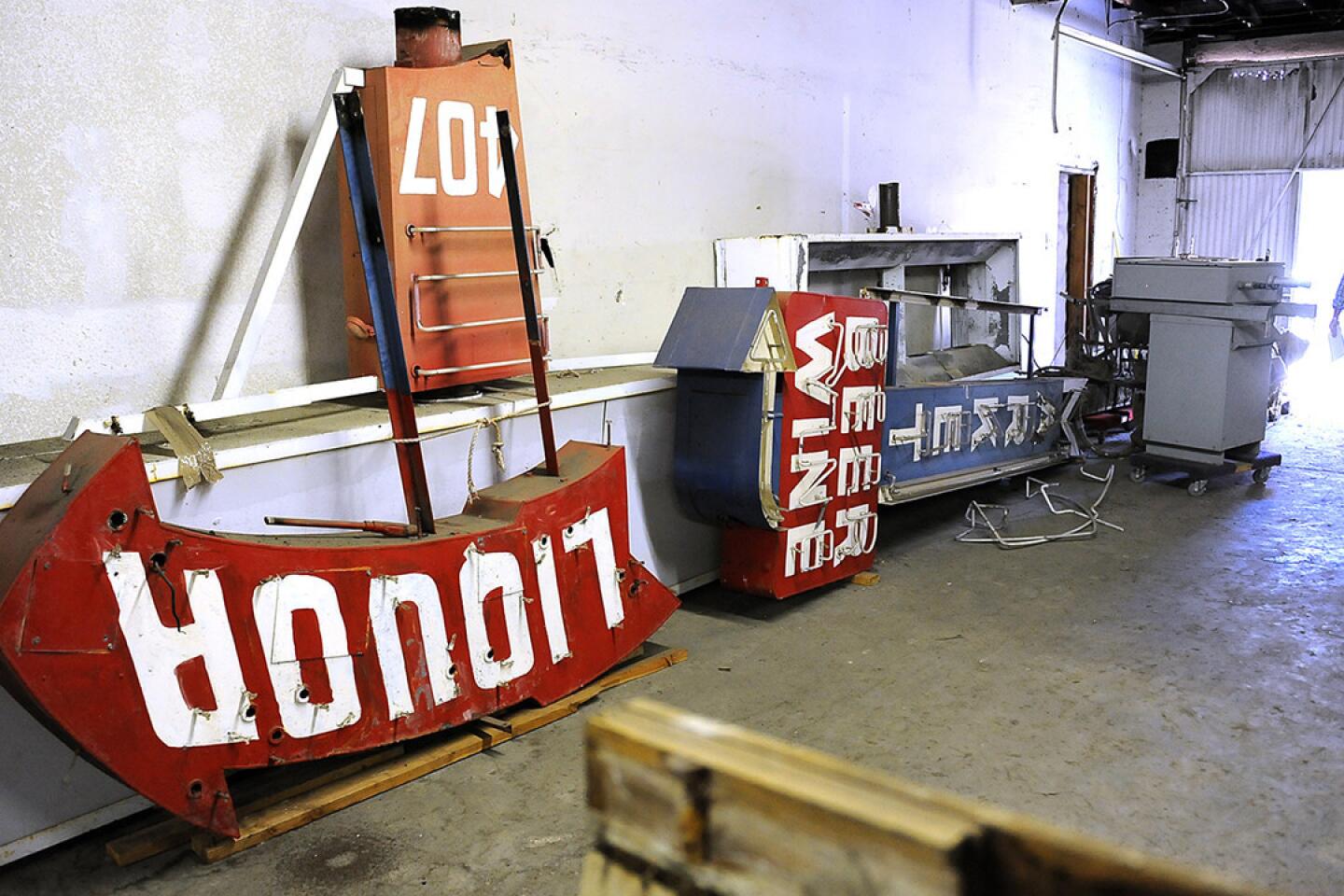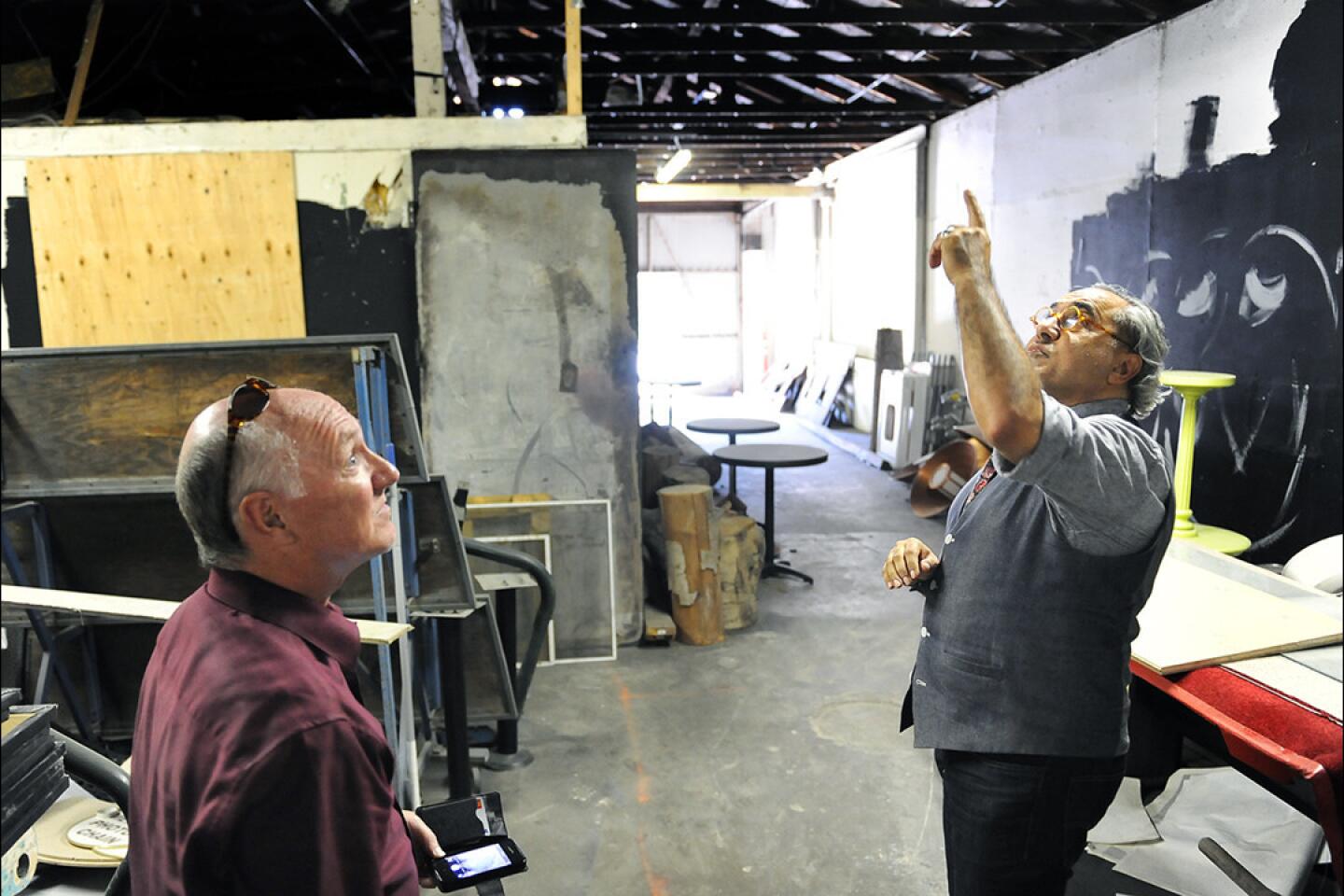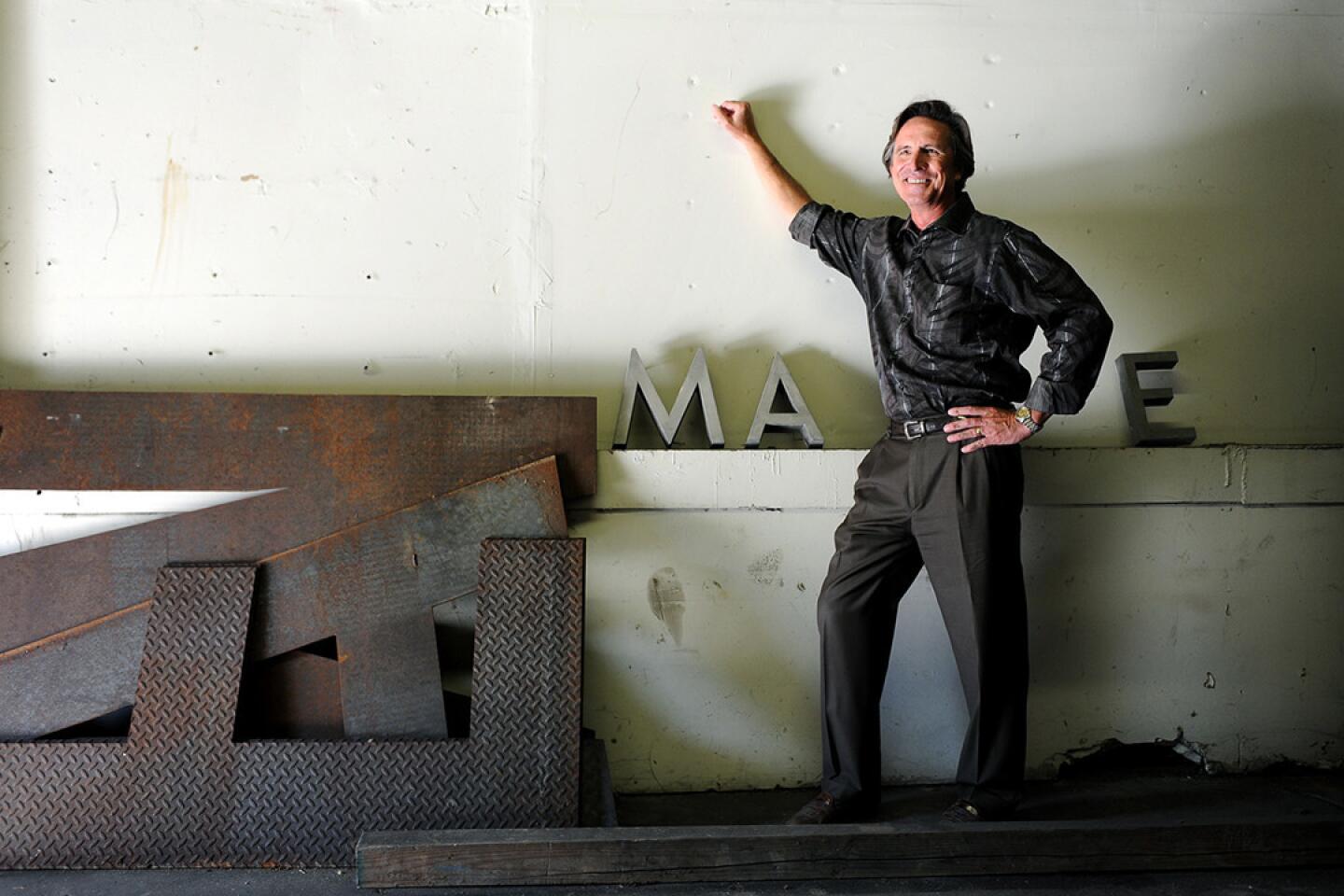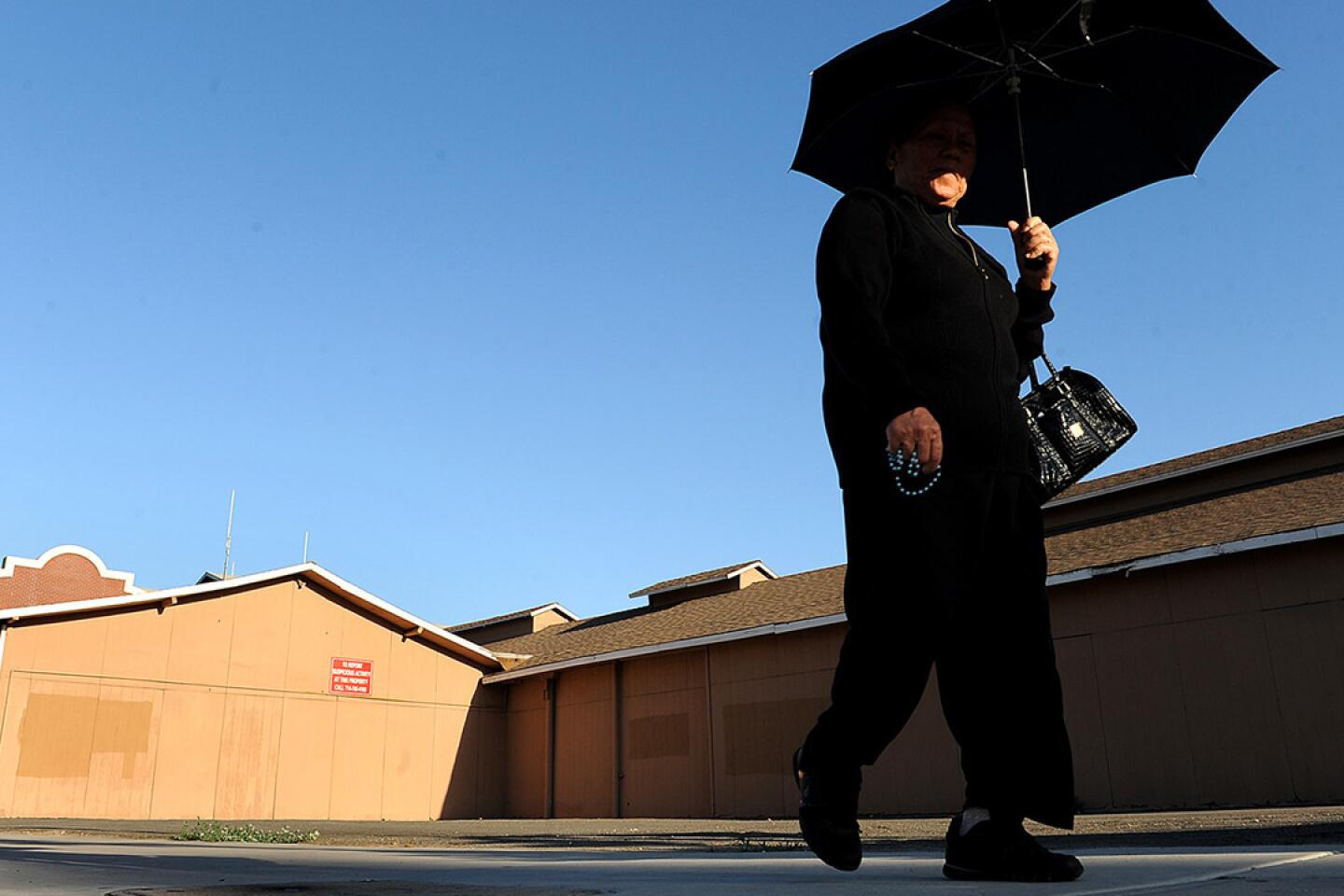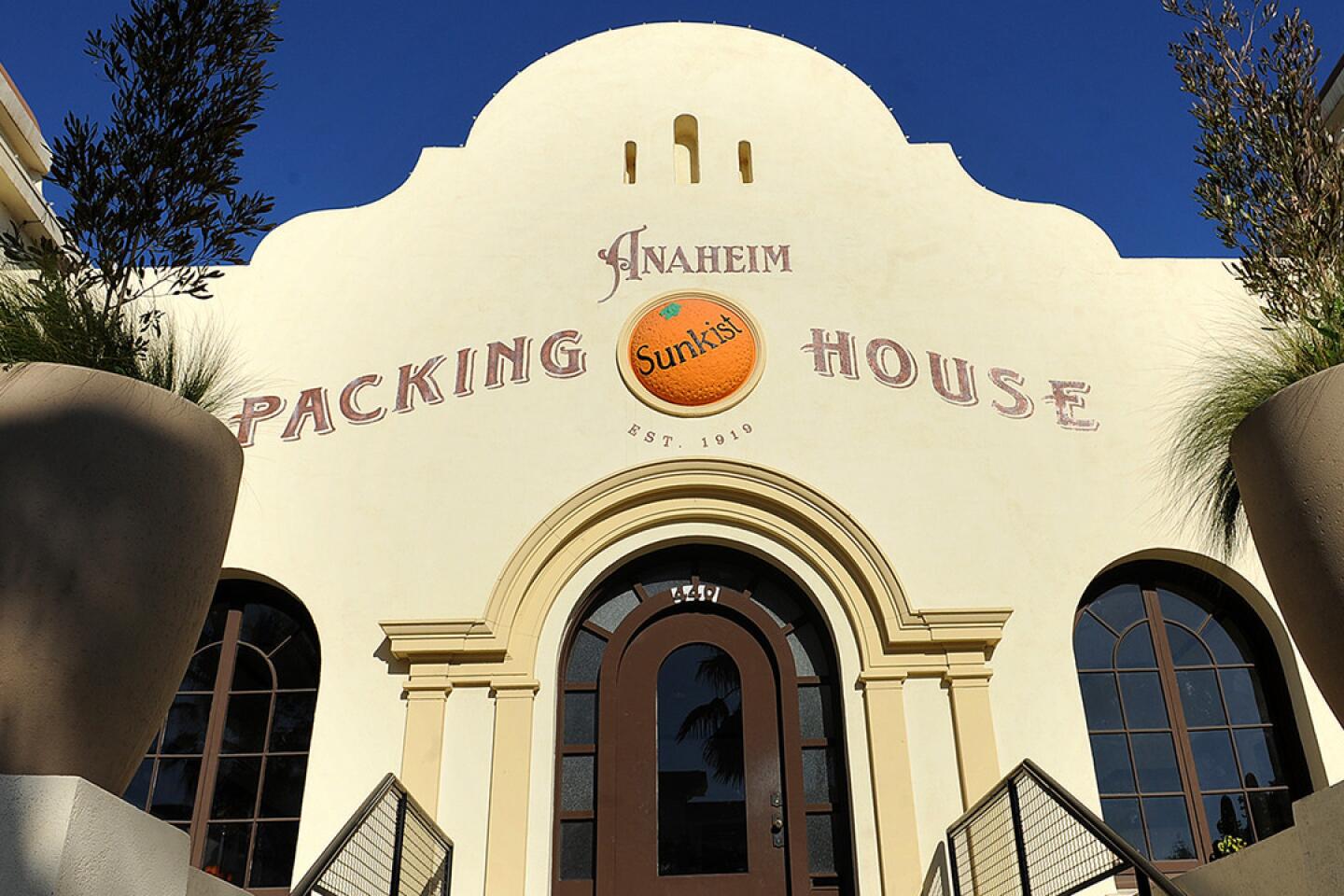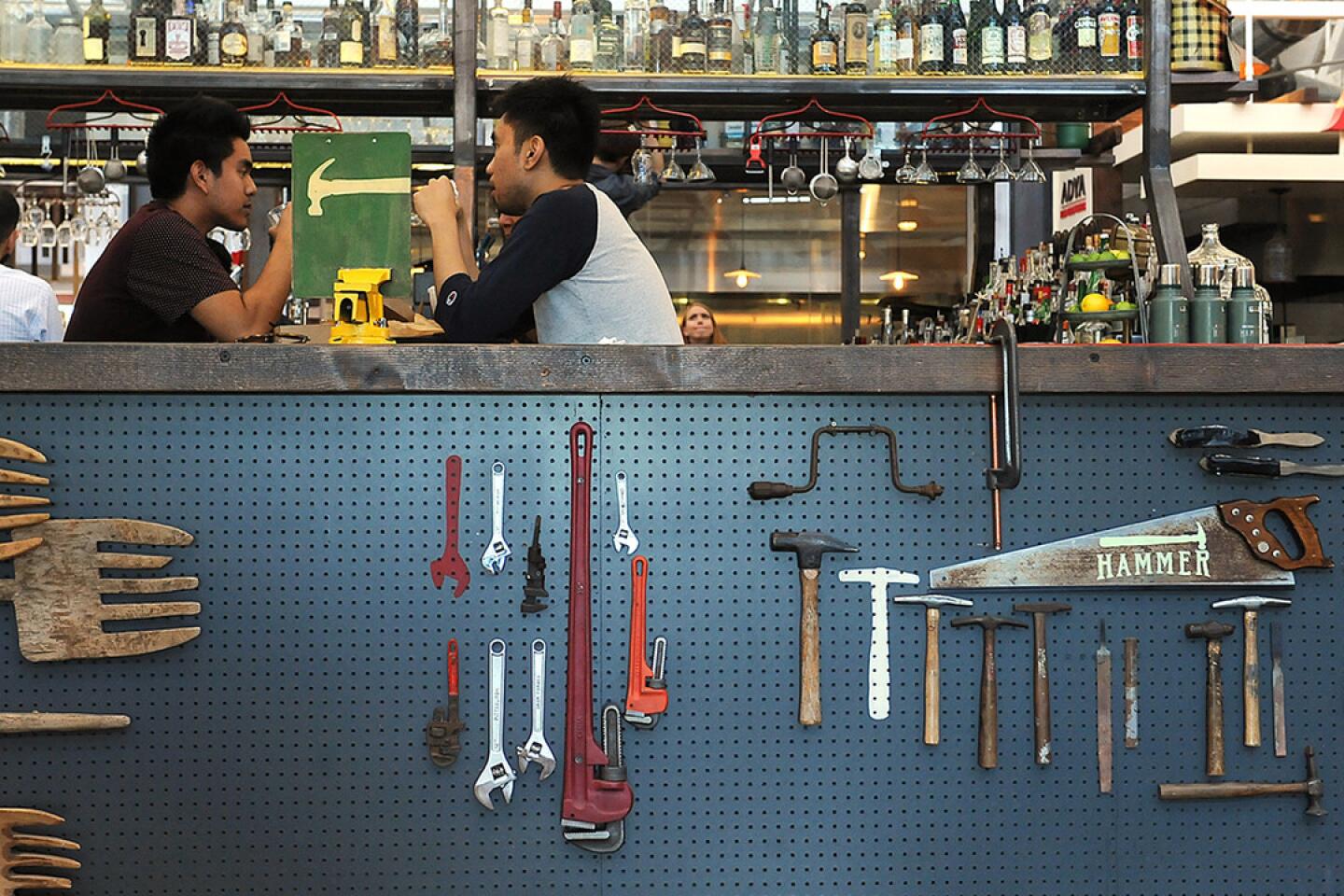Developer hopes to turn old marmalade factory into the toast of Anaheim
- Share via
A developer behind a string of hip Orange County malls plans to transform an old Anaheim marmalade factory into a beer, wine and whiskey hall.
The project, adjacent to the new Packing House food marketplace, is part of a larger, decades-long push to create a vibrant center for Orange County’s largest city. Anaheim bulldozed most of downtown for the makeover, which has accelerated in recent years.
More than 1,500 residences have been built in the last decade, and trendy retail shops, including a beer-serving barbershop and a vegan cafe, have come to downtown’s Center Street. The Packing House, a marketplace and food hall in a former Sunkist citrus packing plant, has become a popular destination since it opened in May.
“We have reached a tipping point” in downtown’s resurgence, said John Woodhead IV, community development director for the city, which owns the Packing House.
Shaheen Sadeghi, the developer behind the Packing House and the new Make watering hole, is noted for the LAB and the Camp, outdoor Costa Mesa retail centers he designed and filled with offbeat tenants.
For Make, Sadeghi plans an outdoor tasting area, where patrons can sip alcohol made by a brewery, a whiskey distillery and a winery inside the early 1900s structure that once churned out orange marmalade. Sadeghi envisions classes to teach budding “makers” how to create their own beer, whiskey and wine.
“With the next generation of creative culture, people don’t just want to drink beer, they want to make beer,” Sadeghi said.
Construction — which will also require punching out walls in the aging building to open it to the street — is expected to start in January. Make is scheduled to open next summer, Sadeghi said.
For now, the 12,600-square-foot building is filled with disparate objects of a bygone era: A switchboard from a long-gone Pickwick Hotel, and a sign for a motel designed in the 1950s-60s Googie-style. Anaheim acquired the objects during its redevelopment efforts, often through demolition.
Downtown Anaheim flourished in the 1920s and 1930s, when oil money helped drive a construction boom, said Jane Newell, Anaheim’s Heritage Services manager. The town center, near the present-day corner of Anaheim Boulevard and Center Street, eventually shed its Old West feel and wood buildings for larger masonry structures.
It was a thriving neighborhood with bustling theaters, department stores and restaurants.
The postwar period was tougher. The indoor Anaheim Center mall opened nearby in the mid-1950s and siphoned retail traffic from downtown, Newell said.
An adult movie theater, thrift stores and cheap motels occupied by transients popped up downtown.
In the 1970s and 1980s, citing urban blight, the city’s former redevelopment agency leveled most of the older buildings, including the Pickwick. The hotel was on the National Register of Historic Places when the bulldozers arrived.
Roads were realigned and widened. Little is left, except the old Carnegie library, which is now a museum.
The large-scale demolitions raised the ire of preservationists, and the city has faced criticism for its slow pace to rebuild.
“We leveled, almost overnight, a 100 acres filled with all these wonderful historic resources and the neighborhood came unglued and said, ‘What are you guys doing?’” Woodhead said. “We ripped out our soul and had to build it back.”
Newell recalls that in the early ‘90s the area was still mostly vacant lots. In 2004, CIM Group, which helped revitalize Old Pasadena, broke ground on the Center Street Promenade retail and residential project, for which the city’s former redevelopment agency contributed about $30 million.
The Promenade opened in 2007 and struggled as the recession took hold. In 2010, Sadeghi purchased some of the buildings and brought in shops such as a yoga studio, a shoe store and an artisan jewelry store.
Woodhead credits the more lively downtown atmosphere today to an influx of new residents, which has given businesses a reason to open downtown.
One new arrival is Jennifer Stevens.
In May, she and her husband bought a two-story town house at Brookfield Residential’s new Domain project, across the street from the 1919 Spanish Revival Packing House on Anaheim Boulevard. Stevens said they came from Laguna Niguel for the urban feel. She can pick up meat at the Packing House’s butcher, visit its Sunday farmers market or take French cooking classes up the street.
“A lot of my friends aren’t happy with me now, because I won’t leave my neighborhood,” the 43-year-old said.
Despite the recent turnaround, the neighborhood still feels disconnected compared with nearby city centers of Fullerton and Orange, where there’s more shops within walking distance of one another.
Woodhead said the city is in the process of “knitting together” the neighborhood and slowing down traffic to make the neighborhood more pedestrian friendly. There is also a push to save older structures, unlike Anaheim’s redevelopment push decades ago.
The Make building was once home to the marmalade factory of Thomas Crawford, the founder of the Anaheim Daily Herald.
Over the years, it’s been a radiator shop and served as storage space for parade floats and produce.
Sadeghi said Make, which will have some casual food as well, is designed as a community gathering spot that could help it become a destination for both locals and visitors.
Next door, the Packing House has already become a popular gathering place. On Monday, it was buzzing with activity as visitors, from millennials to baby boomers, sipped craft beers, ordered gourmet Popsicles and ate crepes.
Shannon McFarland, 25, sat with a friend on an American flag cushion seat, overlooking food stalls and shops.
The former New York University student said the market reminded her of the “boom, boom” of New York City with its multicultural people and multicultural restaurants packed tightly together.
But the Orange resident said that save the Packing House, there’s little else to do in the neighborhood. She then paused: “Maybe I haven’t explored enough.”
Twitter: @khouriandrew
More to Read
Inside the business of entertainment
The Wide Shot brings you news, analysis and insights on everything from streaming wars to production — and what it all means for the future.
You may occasionally receive promotional content from the Los Angeles Times.
